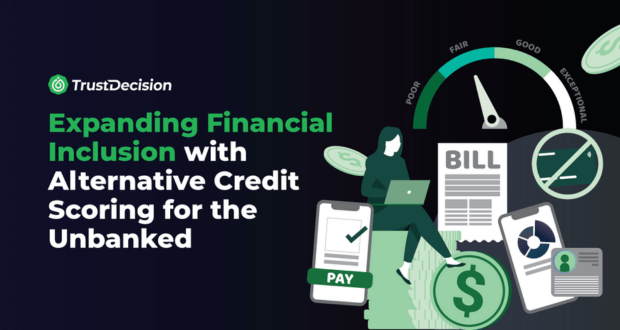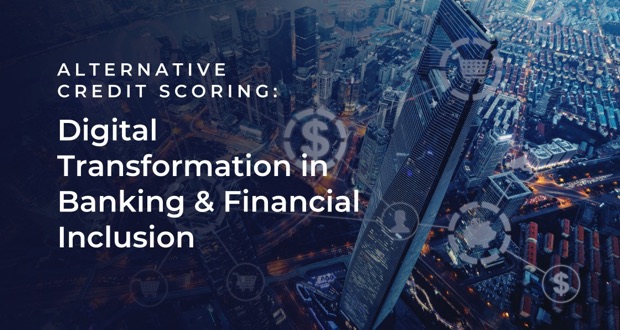In many emerging economies, millions of people remain unbanked or underserved by formal financial institutions. According to the World Bank, as of 2021, nearly 24% of adults worldwide do not have access to a bank account. While this number has decreased over the years, most of the unbanked population lives in developing economies, since account ownership is nearly universal in high-income countries, and the majority of them are concentrated in countries like Indonesia, the Philippines, India, Pakistan, South Africa, Ghana, and Kenya. While traditional credit scoring models rely heavily on banking data and formal credit histories, many in these regions lack the necessary documentation to participate in formal financial systems.
However, there is immense potential in these markets. With mobile and internet penetration growing rapidly, particularly in emerging economies, a large portion of the population is digitally active, performing daily transactions through mobile wallets, e-commerce platforms, and social media. For example, mobile penetration rates in countries like Kenya and Indonesia exceed 100%, meaning many individuals own more than one device. This presents a clear opportunity for financial institutions (FIs) to tap into alternative credit scoring methods that go beyond traditional credit data.
By exploring alternative sources of data, financial institutions can provide credit to millions of individuals who have previously been excluded, opening up new revenue streams and expanding financial inclusion.
*Note: Mobile penetration rates can surpass 100% when the number of active SIM cards in a country exceeds its actual population, often due to individuals using multiple SIM cards or devices.
The Challenges of Traditional Credit Scoring
One of the primary barriers to accessing credit in emerging markets is the lack of traditional credit data. Conventional credit scoring relies on financial histories, such as past loans, credit card payments, and formal income documentation. However, many unbanked individuals do not have this kind of financial history, leaving them ineligible for traditional credit scoring.
This gap highlights a growing mismatch between the existing financial infrastructure and the needs of the market. Credit bureaus in these regions often lack comprehensive data, as their databases primarily cover salaried individuals who are part of the formal economy. Yet, many unbanked individuals engage in entrepreneurial activities, informal employment, and day-to-day transactions that could serve as valuable indicators of their creditworthiness if only they could be captured and analyzed.
The inability of credit bureaus to address the unique characteristics of these markets creates a significant challenge for financial institutions. Without the proper tools to assess the risk of lending to the unbanked, FIs may hesitate to extend credit to this large segment of the population.
Alternative Credit Scoring: A New Path for Financial Inclusion
In response to these challenges, alternative credit scoring methods have emerged as a promising solution. By leveraging non-traditional data sources, financial institutions can build a more accurate picture of an individual’s creditworthiness, even in the absence of formal financial history.
1. Mobile Payment and Transaction Data
Mobile wallets and digital payment platforms are widely used in emerging markets, offering valuable insights into an individual’s financial behavior. By analyzing transaction history, payment patterns, and account balances, FIs can gain a better understanding of an individual’s ability to manage and repay credit. For example, consistent mobile payments for utilities, phone bills, or e-commerce purchases can indicate financial responsibility.
2. Telecommunications Data
Telecommunications data, such as phone usage patterns, call frequency, and prepaid phone top-ups, provide additional insights into a user’s financial stability. This type of data is particularly relevant in countries where mobile phone ownership is high, but formal financial penetration is low. By evaluating the consistency and reliability of these patterns, FIs can estimate the credit risk of potential customers.
3. Utility Payment Records
Utility payments, including electricity, water, and gas bills, are another critical source of alternative data. These recurring payments demonstrate a consumer’s ability to manage ongoing financial commitments. By analyzing timely payments or missed payments, FIs can assess whether an individual is likely to repay credit on time.
4. Social Media and Behavioral Data
Social media behavior can also serve as an alternative source of credit data. Patterns in social interactions, professional networking, and e-commerce activities can offer insights into an individual’s social stability and economic engagement. While social media as a credit scoring tool is still in its infancy, it is an avenue that some fintech companies are exploring as part of broader alternative data models.
5. Loan Application Activity Insight
By tracking a borrower’s loan application activity across various digital lending platforms, lenders can better understand credit-seeking behavior with a holistic view. Frequent loan applications within a short period and across different platforms may suggest financial stress, whereas fewer, well-timed applications could indicate responsible credit use. This data is valuable in assessing whether an applicant poses a higher risk based on their history with other digital financial products, especially since traditional credit bureaus typically provide such data only from conventional banks.
6. Repayment Behavior Analysis
Repayment history is one of the strongest indicators of creditworthiness, even in informal settings. Patterns such as overdue payments, timely repayments, and the frequency of reminders can help financial institutions assess the likelihood of future defaults. For borrowers lacking traditional credit histories, these behaviors provide crucial context about their ability to manage debt. Similarly, when traditional credit bureaus mostly provide similar data from conventional banks, alternative behavior analysis from multiple digital lending platforms serves as an important indicator of a borrower's financial health, offering a broader perspective on creditworthiness.
7. Device Risk Indicators
The devices used by borrowers to access financial services can also provide key insights. Device risk indicators can reveal whether a borrower’s device has been linked to previous fraudulent activities or is associated with multiple high-risk transactions. By assessing factors like device model, usage patterns, and security risks, lenders can flag potential fraud before it escalates.
By incorporating these data points into the credit evaluation process, financial institutions can make more informed lending decisions, even in markets where traditional credit information is limited. These insights, supported by solutions like TrustDecision’s Credit Data Insight, enable lenders to reach unbanked populations more confidently while managing risks effectively.
The Future of the Financial Ecosystem: Collaboration and Innovation
The future of alternative credit scoring lies in collaboration and innovation. As the financial ecosystem evolves, we are likely to see more cooperation between traditional FIs, fintech companies, and regulatory bodies.
Consortium Networks
One emerging trend is the creation of consortium networks, where multiple stakeholders like mobile/digital payment companies, telco, social media platforms, e-commerce, together with the credit bureaus, lenders, regulators —including competitors— come together to share data and insights. These networks allow FIs to pool their data on consumer behavior, creating a more comprehensive and accurate view of creditworthiness. By working together, industry players can enhance the quality and reliability of alternative credit scoring models.
Consortiums can also help overcome regulatory hurdles. As governments and regulators place increasing emphasis on data privacy and security, collaborative efforts among industry stakeholders can ensure that alternative credit scoring solutions comply with relevant regulations while still delivering value to consumers and lenders.
The Role of Technology
Advances in technology will play a significant role in shaping the future of credit scoring. Artificial intelligence (AI) and machine learning (ML) models can analyze vast amounts of data from diverse sources to create accurate and predictive credit scores. These technologies are particularly well-suited to alternative data, as they can identify patterns and trends that may not be apparent in traditional scoring models.
Moreover, AI and ML can adapt to the unique characteristics of different markets, allowing FIs to tailor their credit scoring models to the specific needs of the unbanked population in emerging economies. This flexibility is key to building a financial system that is both inclusive and sustainable.
In A Nutshell
Alternative credit scoring represents a vital step toward financial inclusion in emerging markets. By moving beyond traditional credit data and embracing alternative data sources, FIs can reach millions of unbanked individuals, offering them access to credit and other financial services that can improve their economic opportunities.
As a credit risk management practitioner, we are committed to driving innovation in this space, providing financial institutions with the tools they need to assess credit risk more accurately and inclusively. By leveraging non-traditional credit data and collaborating with industry stakeholders, we can help build a financial ecosystem that benefits everyone—especially those who have been left out of the formal financial system.
References
- World Bank. Financial Inclusion Overview. Retrieved from https://www.worldbank.org/en/topic/financialinclusion/overview
- Kenyan Wallstreet. Smartphone Penetration in Kenya Rises 61% to 30.8 Million. Retrieved from https://kenyanwallstreet.com/smartphone-penetration-in-kenya-rises-61-per-cent-to-30-8million/
- Datareportal. Digital 2021: Indonesia. Retrieved from https://datareportal.com/reports/digital-2021-indonesia
- TrustDecision. Credit Data Insight Solution Overview. Retrieved from https://trustdecision.com/solutions/credit-data-insight






%2520(1).png)






